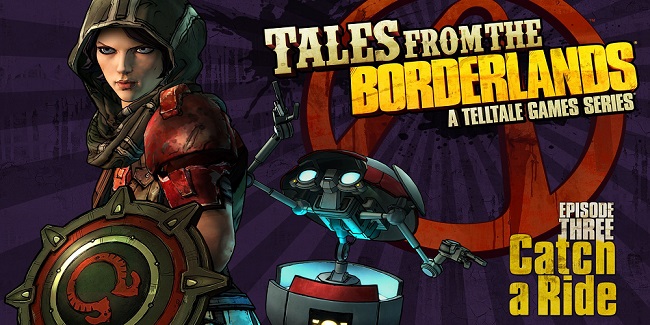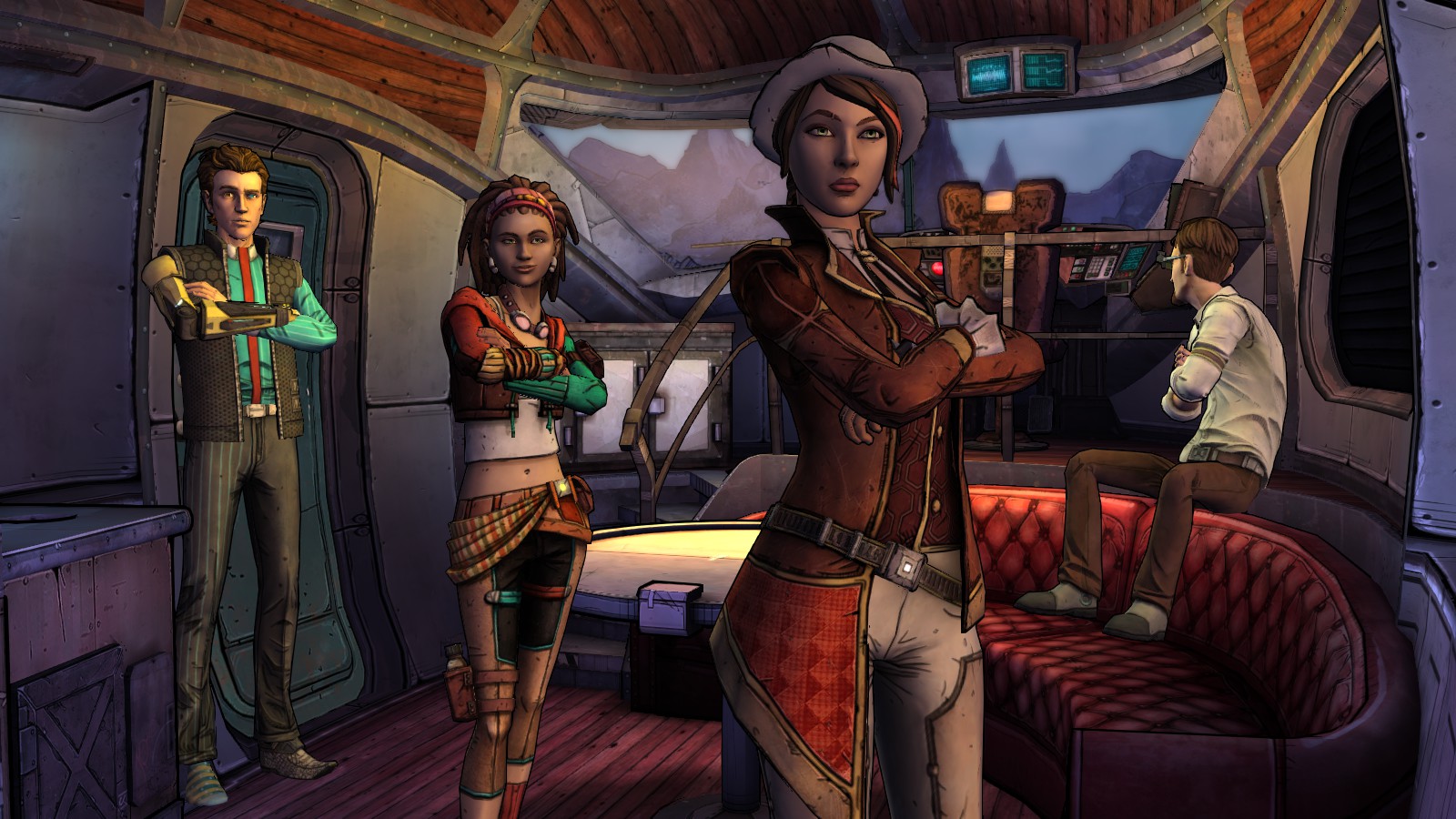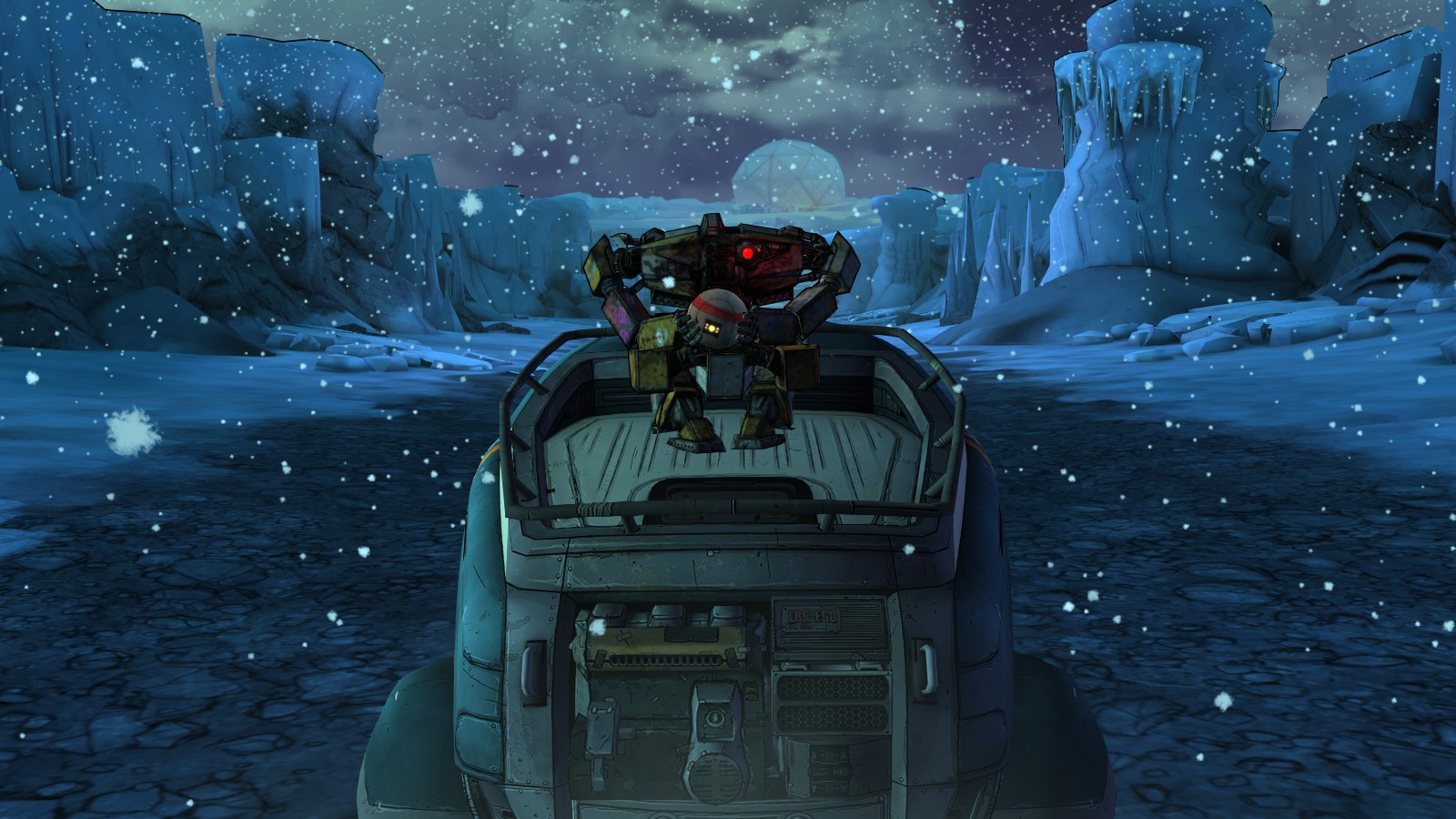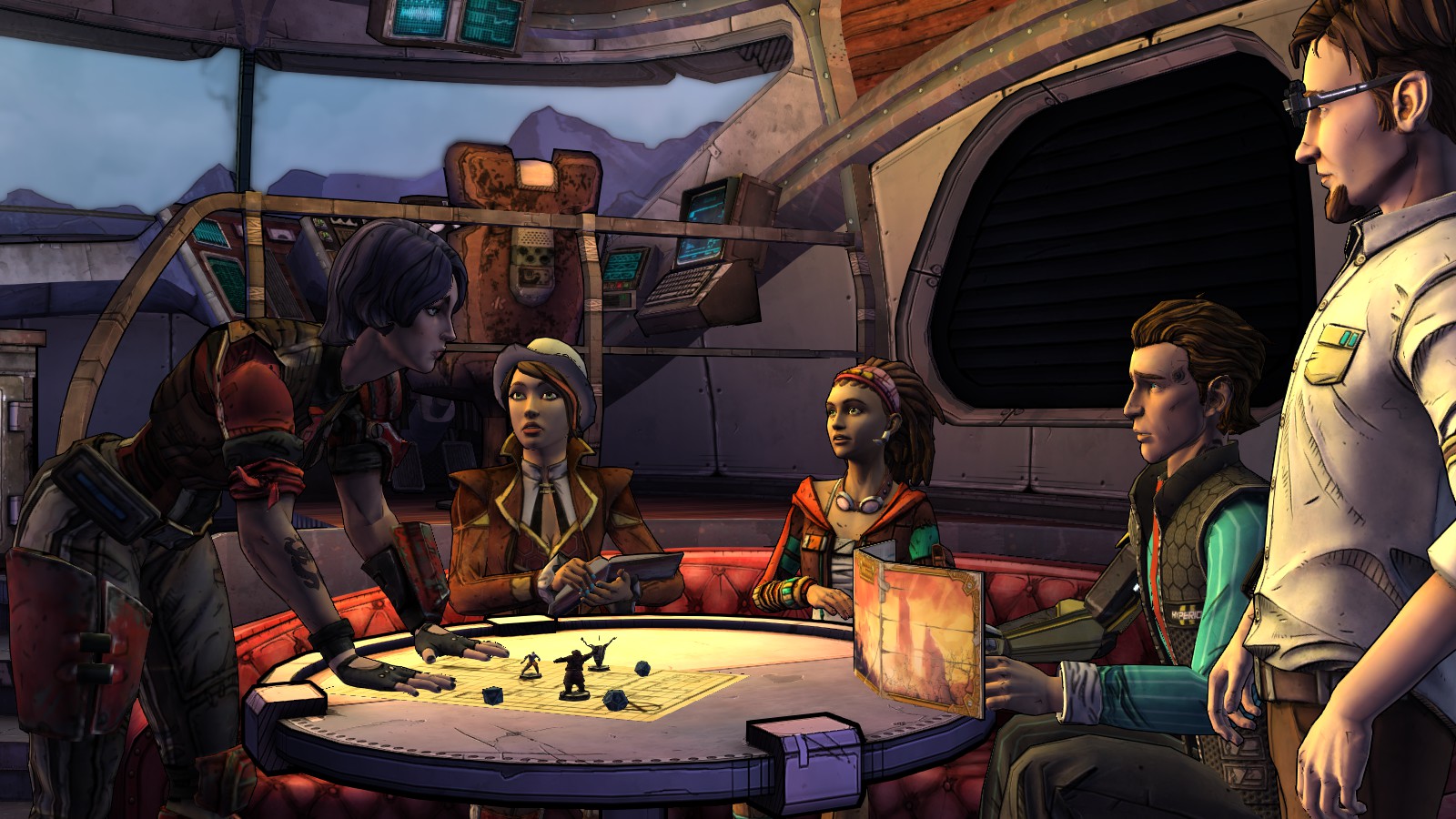
TftB is back for Episode Three, Catch a Ride, and I had to look that subtitle up this time, perhaps because I wasn’t staring at it for three months wondering when it would arrive. As is par for the course with both Borderlands and Telltale titles, we’re still being introduced to new characters as far as half-way into the series. I’m enjoying where Telltale is taking the story within the Borderlands universe, but the gameplay is quickly becoming stale. This is also the first episode that I noticed a bug while playing; in fact, I can’t remember ever having bug issues with Telltale titles at all. This episode came faster, but I’m beginning to ponder the cost of that and whether it will roll over into the next episode and become a trend.
As I said, the story is quickly building momentum and heading in a direction that’s got me pretty psyched. Jack’s return from the dead has been a slow and hilarious build up that I’ve enjoyed so far though it’s symptomatic of Telltale’s over-reliance on pop-culture humor in this series. Villains clawing their way back from the grave is a classic and overused trope, with any series that ventures to use it these days running the risk of being cheesy as hell. So far it hasn’t been bad but we’re at episode three and there’s still little to no suggestion of why Jack is here or what he’s even doing. The gag of “I’m dead and super crazy for it,” is only going to be funny for so long. You actually have to start doing something with it Telltale – your time, and my patience is running short. This episode is also chock-full of pop-culture jokes and references, much more than normal. Your enjoyment will be based purely on how much stuff you watch and play, and how low you’re willing to brow.

Or if you’re the sort of person who laughed at Claptrap randomly dropping “ALLONS-Y” in Borderlands 2, as though the word itself is a joke.
Granted, this episode does ponder briefly over the idea of whether you’re dealing with a continuation of Jack’s consciousness, or if this “Jack” is nothing but a digital echo. In the end, if it’s a perfect replica of Jack’s personality, is sentient, and retains all of Jack’s memories, then isn’t it fair to say that Handsome Jack still lives? It’s an idea that flirts with trans-humanism, especially considering Jack can enter a physical body in the form of Rhys, and adds a new layer of depth to Jack’s character. However, I did say the episode lingered on it briefly; what it did explore left me wanting and not in the good way. The nature of Rhys’ apparent personal connection to Jack is also still largely unclear, and without any definite information things are getting a “LOST” vibe. The back and forth between the two is entertaining at least, I just hope that Telltale aren’t making it up as they go along.
On the flip-side, this episode also felt quite Fiona-heavy; while I wasn’t timing it, I felt like I was playing as Fiona for much longer than I was Rhys. This isn’t strictly a bad thing since Fiona’s narrative is often the more heartwarming and less whacky of the two that keeps the overall story grounded (literally) on Pandora. Athena finally catches up with Fiona and Sasha to reveal that she’s not trying to kill them but is fulfilling a contract to mentor them on how to not die a horrible, bandit-related death. The title of Vault Hunter gets thrown around more than a few times during this episode. It makes me wonder if we’re looking at some of the player characters for Borderlands 3. (We all know it’s coming.)

It isn’t, by the way. “Allons-y,” I mean. Just randomly saying the word doesn’t make it funny.
I enjoy Fiona’s story for the insight it provides into the lives of Pandorans in general, as opposed to Rhys’ which can feel like “Handsome Jack: The New Adventures.” Not that there’s anything wrong with that, but it’s great when Telltale starts going off that beaten path and take a glimpse into the extended universe. Becoming a bandit in some form or another seems almost unavoidable in this world – that is if you intend on living long. While the story behind Fiona and Sasha’s lives is somewhat unique in some aspects, theirs start from humble, and impoverished beginnings apparently shared by many across Pandora. It’s unsurprising that the story has been so engrossing thus far, and it’s by far the best part of this (and any other Telltale) series.
This episode also introduces a slew of new characters, not the least of which is Gortys: The adorable-but-annoying Atlas bot that you’ve been unsuspectingly working towards awakening. If I’m honest, the character is pretty cute but only in small doses; too much exposure and I start to feel the kind of irrational anger I get around Claptrap at times. I don’t know what it is about the corporations in this universe, it’s like creating an AI with a design basis of “being on the nose” is an unspoken requirement. I wouldn’t be surprised if Mr. Torgue turned out to be a semi-sentient Android that’s been malfunctioning since Borderlands 2. It looks like Gortys is here to stay too, at least for the moment, and her presence raises far more questions than it answers. One might say that the plot has thickened.

You can be funny on your own, Borderlands, I’ve seen you do it. You’re better than that.
You’ll notice that your ECHO eye has been hiJacked (eh?) while running around as Rhys in this episode, with Jack’s thoughts replacing the normal flavor text that would appear while scanning. Jack’s colourful way of describing his boredom during this activity pretty well sums up how I’ve come to regard it too. Rhys uses it quite frequently as a plot device but in the few sections that allow control over his physical movement it’s little more than an annotated slideshow. It’s a good example of how this game makes bad use of its very limited gameplay and, like I’ve pointed out before, the other Telltale games’ gameplay style doesn’t work here. That hasn’t changed in this episode and, in fact, it’s gotten worse.
Rather than attempting to alter or improve what the gameplay sections could be doing, Telltale have just reduced the amount that are present. This was particularly noticeable with regards to the very occasional QTE’s, whose sudden appearance had me slapping madly at the keyboard in the hopes I’ll press the right thing. Quite often I didn’t, and there didn’t appear to be any consequences for that either, which has me wondering why they’re even in there at all. It made a kind of sense for QTE’s to be used in the Walking Dead games; however, they weren’t exactly welcome then either and by Wolf Among Us I was sick of them entirely. They’re just completely ill-fitting to the action being presented in Tales from the Borderlands and turning them into infrequent immersion-breakers isn’t the right way to fix this.

Just… Use pop-culture references sparingly, alright? And use them in ways that actually make sense – don’t be Family Guy, basically.
This is the first Telltale game I’ve played that’s had noticeable bugs, as well, with characters flying off-screen or zipping around the frame during cutscenes. If it had only happened once, I likely wouldn’t have thought anything of it but it happened consistently throughout the episode and during a subsequent replay. Given that this is where I would normally praise the episode for its otherwise exemplary presentation, it’s disappointing. There weren’t any audio glitches at least, and the intro cinematic remains one of the most enjoyable and entertaining parts of the game. The bugs are concerning, however, especially since I didn’t exactly get to this episode promptly. I just hope that it’s not a sign of slipping quality standards at Telltale.
 Good story progression
Good story progression
 Smooth character introductions
Smooth character introductions
 Got that allonsy thing off my chest
Got that allonsy thing off my chest
 Slight drag in the Rhys/Jack arc
Slight drag in the Rhys/Jack arc
 Gameplay still boring
Gameplay still boring
 Cutscene breaking bugs
Cutscene breaking bugs
The new King’s Quest game will be coming out later this year, and it too will be releasing the game in episodes. I’m excited about this because maybe it’ll show Telltale how to get the gameplay right in their releases. I’ve often felt that the Telltale games are the natural evolution of the point-and-click adventure genre and that they just needed time to work out the kinks. With Tales from the Borderlands marking the sixth such episodic series that Telltale have released, these kinks are becoming core design. Story-wise, things are still chugging along okay with only a few issues but the gameplay is really starting to grind my gears. Innovation isn’t a necessity for every game, but the solution to ill fitting design isn’t to just use slightly less of it and hope the player doesn’t notice that it still sucks. Worse still is when things are rushed to meet an episodic release schedule and 4th-wall shattering bugs start showing up. If we’re lucky, this was just a stumble on their way to something better and things will pick up next episode.
EDITOR NOTE: this game was purchased at retail by the writer and reviewed on PC across 4 hours of gameplay. Please also understand that in an effort to be fair, we will not score an episodic game until the season is complete.











